Patrick Lencioni’s Pyramid Model
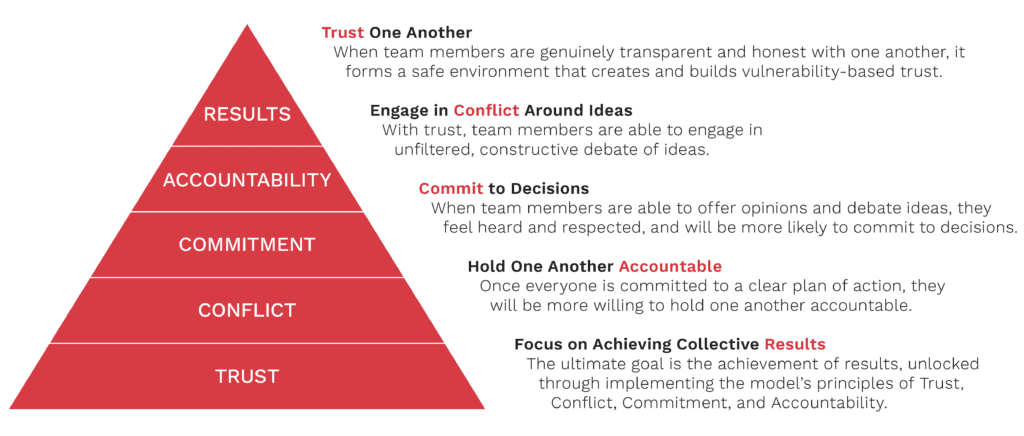
Lencioni's Pyramid - A Model for Teamwork
Patrick Lencioni’s pyramid is a popular framework for understanding and addressing common challenges that teams face.
Lencioni’s pyramid model for teamwork was outlined in his New York Times bestselling business fable titled The Five Dysfunctions of a Team. The model is represented as a pyramid because it consists of five layers, with each layer building upon the previous one.
The five layers within the pyramid are:
- Absence of Trust
- Fear of Conflict
- Lack of Commitment
- Avoidance of Accountability
- Inattention to Results
The model suggests that for a team to function effectively, it must address these layers and work towards building a cohesive team. Let’s look at each layer in more detail below.
Lencioni's Pyramid and the Absence of Trust
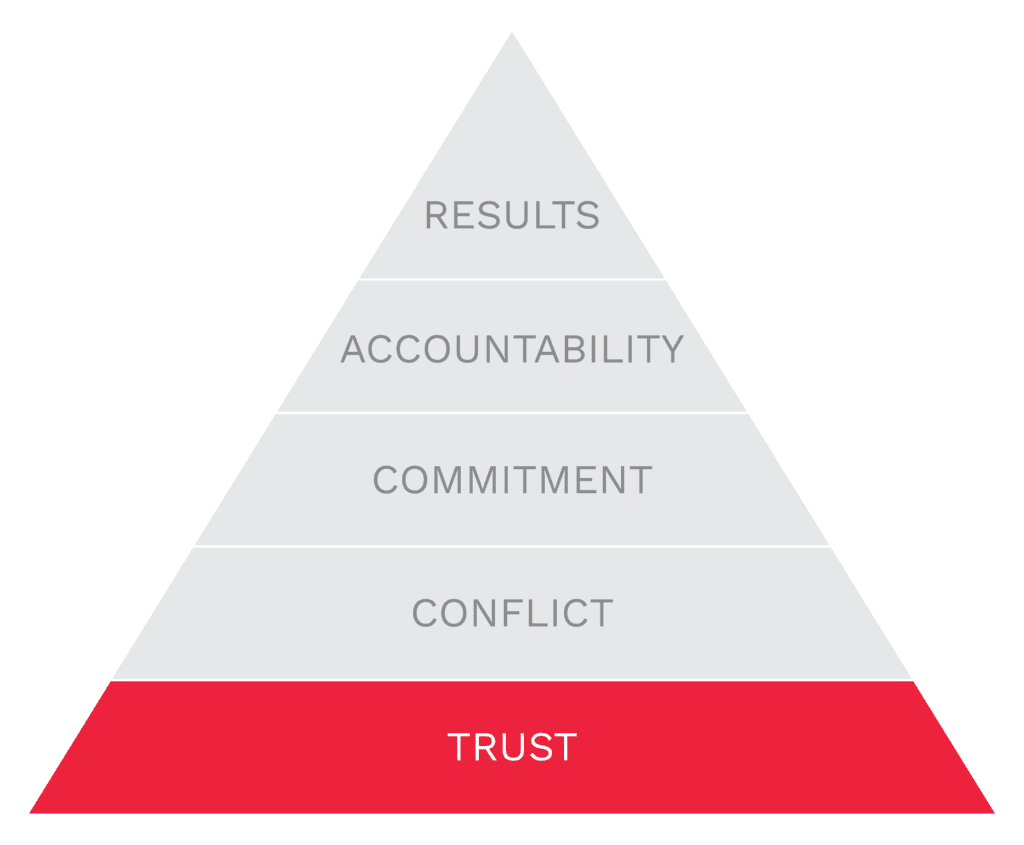
Vulnerability-based trust creates Lencioni’s pyramid’s foundation. It’s easiest to define this level by outlining what happens when vulnerability-based trust doesn’t exist:
- Poor communication
- Low morale
- Reduced collaboration (increased politics)
Lencioni clearly outlines that for teams to work, each individual must be willing to be vulnerable with each other. Only then will teams establish trust that allows them to engage in product and constructive conflict.
Building this level of trust takes time.
In Lencioni’s book, the CEO of the fictitious company, DecisionTech, Inc., begins the process of building trust with her new team by helping the leadership team understand each other based on their personality using a tool like Everything DiSC®. She starts the process during a weekend offsite, but the process goes on for months afterward.
Lencioni's Pyramid and the Fear of Conflict
Conflict is the second level of Lencioni’s Pyramid model. Conflict might seem like a poor word to describe healthy teamwork. However, it was specifically chosen by Lencioni because he felt it best described the dynamic between two individuals who trusted one another and felt comfortable advocating for their idea.

Healthy conflict is a natural part of collaboration, and it leads to better decision-making. Productive conflict will show the following signs:
- Focuses on ideas, not personalities.
- Includes respectful communication
- Constructive criticism
- Outcome-focused
Healthy and productive conflict can only exist once vulnerability trust is established.
Lencioni's Pyramid and Lack of Commitment
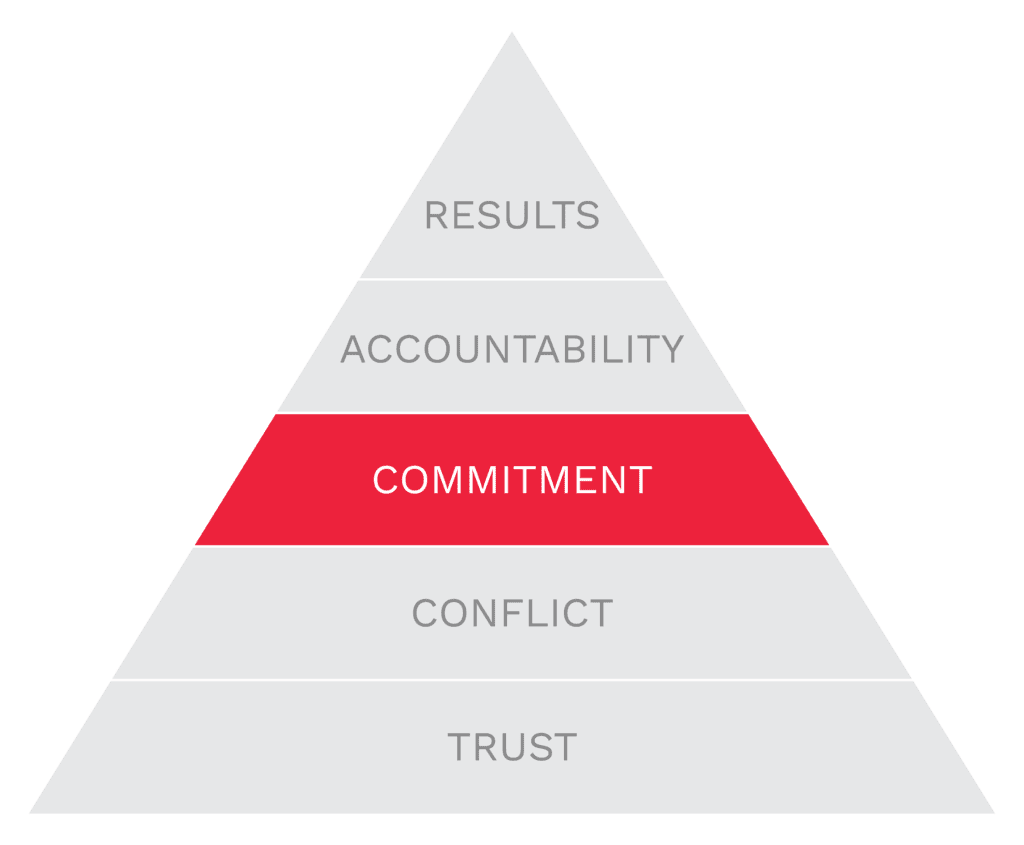
Commitment is the third level of Lencioni’s model for teamwork. Teams ready to improve on this level must have developed their ability to engage in vulnerability-based trust and conflict before they can work on improving their ability to commit collectively to team goals and decisions.
When team members are not able to engage in healthy conflict, they may avoid important discussions or withhold their opinions, which can prevent the team from making informed decisions. To overcome this fear of conflict, team members must be willing to engage in open and honest communication, even when it is uncomfortable (Trust/Conflict).
Lencioni's Pyramid and Avoidance of Accountability
Holding a peer, superior, or direct report accountable might be one of the most challenging tasks within Lencioni’s model. After all, it requires telling someone they aren’t doing something, which can create an awkward encounter. To promote accountability, team members must be willing to hold themselves and each other accountable for meeting their commitments.
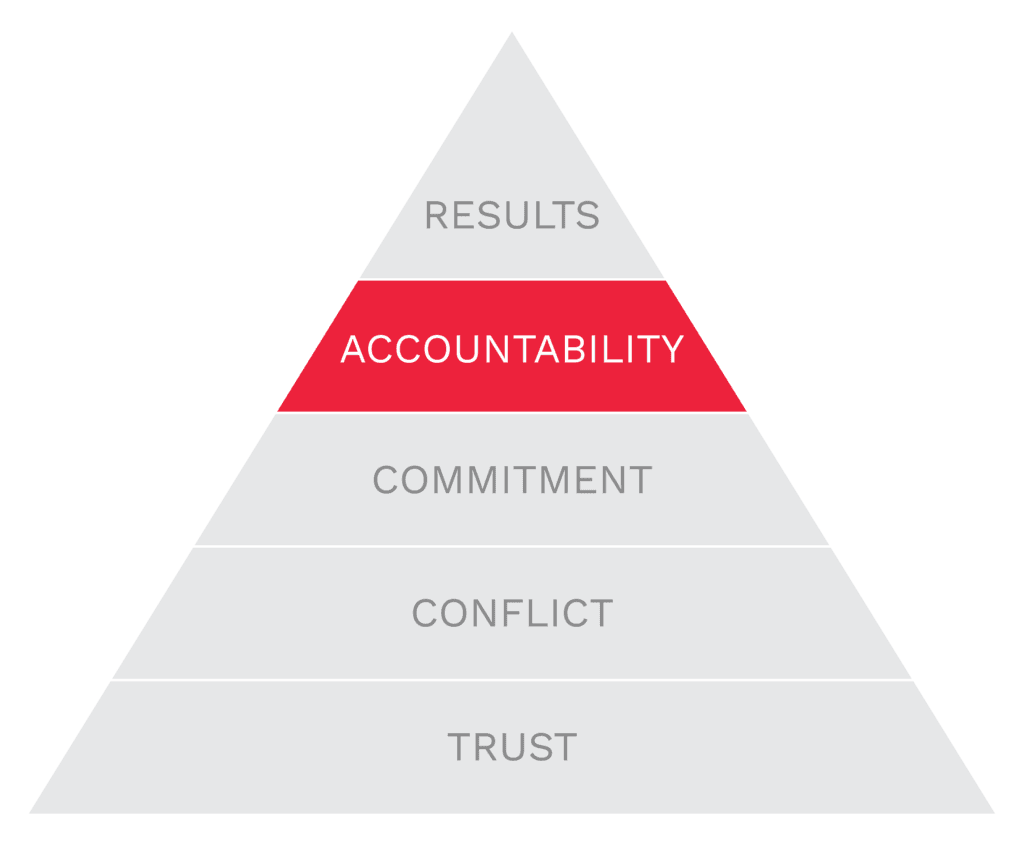
Lencioni's Pyramid and Inattention to Group Results
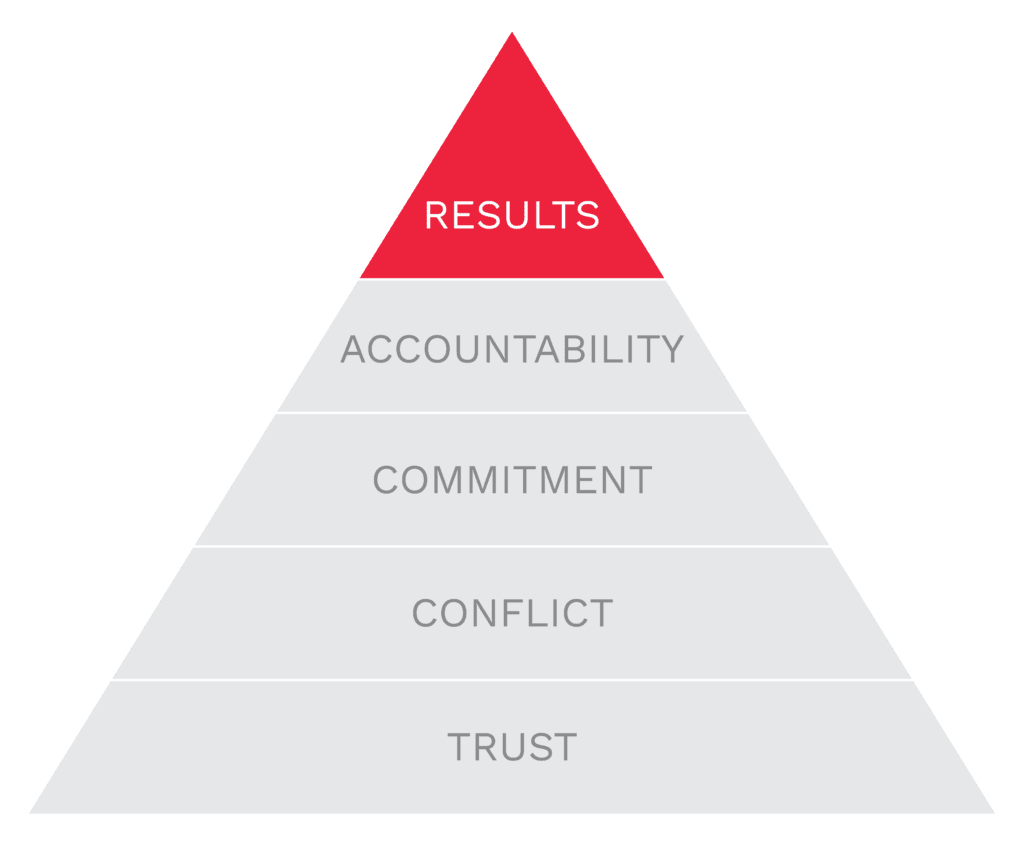
Focusing on group results is the final piece of this model of teamwork. To get to this point, teams must learn to trust, engage in conflict, commit to each other, and hold each other accountable. Reaching the top of the pyramid is no easy task, but the view is worth it.
When groups focus on the collective results, they will forego individual wins that could prevent the team or organization from accomplishing its goals.
